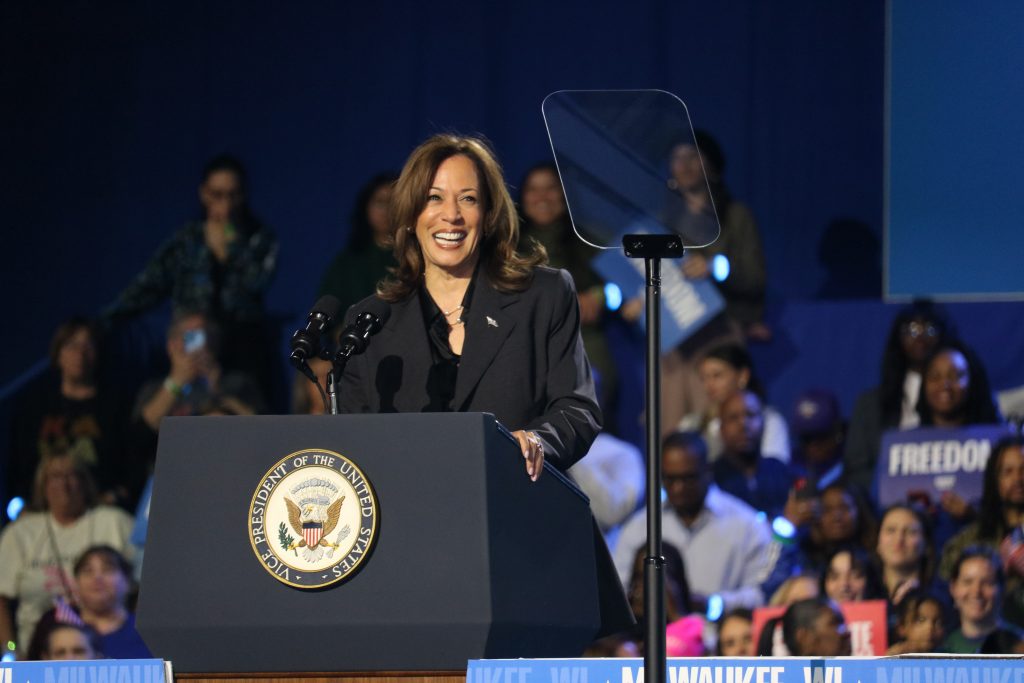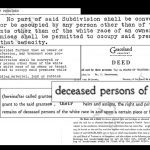Can Harris Win Wisconsin?
Why Democrats are confident. And how the state's geography could upset expectations.

Vice President Kamala Harris at her ‘When We Vote We Win’ rally in West Allis. Photo taken Nov. 1, 2024 by Sophie Bolich.
Wisconsin Democratic Party Chair Ben Wikler is widely considered one of the top state party chairs in the nation. And since he took over in Wisconsin in July 2019, Democrats have been consistently winning in state-wide elections, with the notable exception of Mandela Barnes’ defeat in 2022 to Republican incumbent U.S. Senator Ron Johnson. Wikler has pointed to a lack of money from national Democrats as the cause of that loss, and vowed that this wouldn’t happen in this election. And all signs suggest the Democrats have outraised and outspent the GOP in Wisconsin this election cycle, with Kamala Harris running more ads than Republican Donald Trump.
For Democrats the key to victory begins with Dane County. There are three reasons the county has become so important, Wikler explained in an interview with Urban Milwaukee: a growing population (the county has added 43,000 people since 2016), an ever-higher percent going to the polls (nearly 90% of registered voters in the county cast a ballot in 2020, an astounding turnout) and an ever-higher percent voting Democratic: Hillary Clinton got 70% of the county’s vote in 2016, while Joe Biden won 75%, as a story by the Badger Project noted.
Republicans say they need to win at least 23% of the vote in Dane County to win in Wisconsin and Trump barely missed this in 2020, getting 22.9% of the vote, with the rest going to third party candidates. Dane County could be fertile ground for liberal independent Jill Stein, whose campaign has gotten help from Republican strategists. The votes for Stein in 2016 in Wisconsin, had they gone to Clinton, would have given Democrats the victory here. The most recent Marquette poll by Charles Franklin found that 9% of respondents said they favored third party candidates like Stein or Robert F. Kennedy, Jr.
It’s unlikely the percent voting for a third party will be that high, but as Franklin noted, those voters “could so easily tip this race one way or the other.”
A second key to victory, Wikler notes, is reducing the Republican margin of victory in the WOW counties of Waukesha, Ozaukee and Washington. As Urban Milwaukee’s Data Wonk columnist Bruce Thompson has reported, the percent of the vote going to Democrats has risen from 35% in 2012 to 44% in 2020 in Ozaukee County and from 33% to 39% in Waukesha County over that period. Washington County, however, has seen no such reduction.
Waukesha is particularly crucial as its third in the state in population (Ozaukee ranks 18th), but Wikler points to both counties as a key to victory. “If you talk to Democratic party members in those two counties, you can feel the energy for Harris,” he says.
A third key to victory is winning the Fox Valley, one of the swingiest areas in this swing state. “The voters in the Fox Valley have enormous power,” Wikler says. “The vote there will decide the congressional race, and could help decide how the parties do in the state Legislature and in the presidential race. We’re investing heavily on the ground there.”
Brown County (the state’s fourth largest in population) is the biggest chunk of that region and hasn’t gone Democrat since supporting Barack Obama in 2008. Trump carried the county with about 52% of the vote in both 2016 and 2020.
But Wikler thinks the open race for the 8th congressional district pitting OB-GYN physician and Democrat Kristin Lyerly against Republican Tony Wied, a retired businessman who’s endorsed by Trump, could help drive turnout by Democrats. Lyerly has made reproductive rights a key issue in a year when abortion is seen as a potent issue.
A fourth factor Wikler emphasizes is organizing in rural counties. “The Republican strategy is to run up the score in rural counties, he notes. “Biden didn’t give up on any county. He added voters in every rural county. We are organized in every county in the state.”
Wikler has predicted that the mostly rural Driftless area of western Wisconsin could make national headlines, where he believes Democratic challenger Rebecca Cooke could knock off Republican incumbent Rep. Derrick Van Orden. “I think it could make national headlines,” he told Urban Milwaukee.
With the remapping of Wisconsin’s legislative districts, Democrats now have the opportunity to increase their margin in the state Assembly and the party has candidates in every district. “There’s nothing more powerful than hearing directly from a candidate going door to door and asking for your vote,” Wikler says. “That’s going to drive Democratic turnout up and down the ballot.”
But Franklin isn’t convinced of there will be any bottom-up coattails. “I’m a little dubious,” he told New York magazine. “I don’t believe we’re going to see more than about 10 or 12 assembly seats that are genuinely very competitive. I just don’t think it’s going to drive people to go vote for president.”
For Republicans, the strategy is the reverse: reduce the Democratic margin or turnout in blue counties like Milwaukee. While Obama won 67% of the county’s vote in 2012, that dropped to 65% for Clinton in 2016 and rebounded to 69% for Biden in 2020.
It seems likely the Democratic edge could drop closer to what it was in 2016 — or worse. As Franklin noted, “Democratic fears about lower Black turnout or slippage with Hispanic voters in Milwaukee are well founded.” Meaning Democrats have to make up this loss with gains elsewhere.
As crucial as the Fox Valley is, perhaps the key swing area is Kenosha and Racine counties, which were traditionally working class areas that Democrats could carry. Obama won Kenosha County by 58% in 2008 and 55% in 2012 and Racine County by 53% in 2008 and 51% in 2012.
But the rural areas of these counties helped turn that around for Trump, who won Kenosha County by nearly 2% in 2016 and by 3% in 2020, while winning Racine County by 4% in both elections. These are bellwether counties whose choice for president could be mirrored by the entire state. Both parties know this and are working hard on these counties.
Polls for Wisconsin, other swing states, and the nation show the race is essentially a tossup. But the polls have been off badly since the rise of Trump, whose unorthodox style and contempt for democracy has flip flopped voters in unpredictable ways. “We were off in 2016 by over six points, and we were off by about four points in 2020,” Franklin noted. “The Times had Biden up by 11 points.”
The only thing that’s certain is that turnout will determine the outcome: whichever party is better at getting out the vote will prevail. And once again, Wisconsin is among a handful of states whose vote will decide the winner.
If you think stories like this are important, become a member of Urban Milwaukee and help support real, independent journalism. Plus you get some cool added benefits.
Murphy's Law
-
Journal Sentinel Circulation Still Plummeting
 Oct 9th, 2024 by Bruce Murphy
Oct 9th, 2024 by Bruce Murphy
-
Why Does Summerfest Run a Private Company?
 Oct 7th, 2024 by Bruce Murphy
Oct 7th, 2024 by Bruce Murphy
-
Did Harbor Commissioner Have Conflict of Interest?
 Oct 1st, 2024 by Bruce Murphy
Oct 1st, 2024 by Bruce Murphy






















Women are lurking underground like cicadas, ready to burst into sight tomorrow. Republicans might have slit their throats with their abortion ban victory.